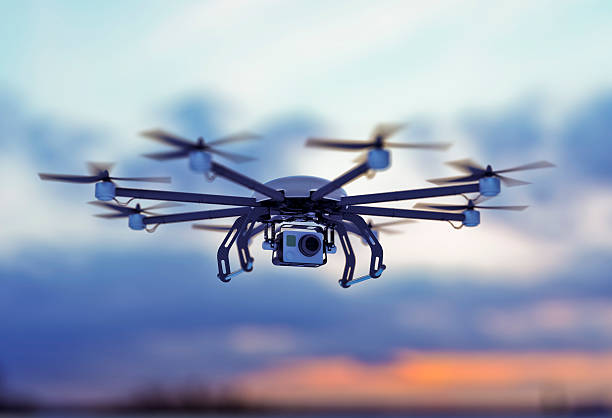Imagine this: two listings in the same neighborhood. One has regular smartphone shots of empty rooms. The other? It opens with a cinematic bird’s-eye view of the house, zooms into the backyard pool, then glides over a lush green neighborhood at sunset.
Which one do you think grabs a buyer’s attention? That’s the power of real estate drone photography.

In a world where first impressions happen online, the way your listing looks, before anyone even steps in, can make or break a sale. And drones are giving realtors a whole new angle (literally) to impress potential buyers.
What Is Real Estate Drone Photography?
Real estate drone photography is exactly what it sounds like: using drones—those remote-controlled flying cameras—to capture stunning aerial shots and videos of properties.
But it’s more than just flashy footage.
Unlike traditional realty photography that focuses on interiors or street-level exteriors, drone photography shows the bigger picture—the scale of the property, nearby landmarks, views, and the overall vibe of the neighborhood.
For buyers, it answers questions like:
How close is the beach?
What does the yard actually look like?
How private is the backyard?
What’s the surrounding area like?
In short, it helps them visualize their life there, not just the house.
Why It Matters (aka Why Your Listings Deserve Drones)
Studies have shown that listings with aerial imagery sell 68% faster than those without. Why? Because they look more premium, more complete, and more trustworthy.
Here’s what real estate drone photography can do for your listings:
Highlight the home’s layout from above
Show proximity to schools, parks, highways, and amenities
Make large properties look impressive and expansive
Create cinematic listing videos that boost engagement on social media
Make your listing stand out on Zillow, Realtor.com, or MLS feeds
In a competitive market, buyers are overwhelmed with choices. Drone shots make your listing feel like the one before they even click “schedule a visit.”
Types of Drone Shots That Work Best
Now that you’re sold on the “why,” let’s talk about the “what.”
These are the key shots you (or your drone pro) should capture:
Aerial Front Shot – Show the entire property and its curb appeal from above.
Top-Down View – Perfect for displaying lot size, backyard features, and nearby land.
Neighborhood Panoramic – Highlight the surroundings, nearby schools, shops, or green spaces.
360° Orbit Shot – A cinematic sweep around the house for drama and context.
Twilight Shot – Captures the property just as the lights come on—adds instant luxury.
Interior Fly-Through (if skilled) – Takes viewers on a seamless inside tour.
Gear You’ll Need to Get Started
If you're planning to shoot yourself or want to understand what the pros use, here’s a starter kit:
Drones
DJI Mini 4 Pro – Beginner-friendly, lightweight, FAA compliant.
DJI Air 3 – Mid-range drone with excellent stability and dual cameras.
DJI Mavic 3 – For professionals needing 4K+ video and superb flight range.
Camera Specs to Look For
4K video recording
3-axis gimbal stabilization
Wide-angle lens
HDR photo capability
Editing Software
Adobe Premiere Pro – For polished listing videos.
Lightroom/Photoshop – For enhancing still images.
Final Cut Pro (Mac users) – Smooth, pro-grade video edits.
Don’t Skip This: Legal Requirements
You can’t just fly a drone and start snapping away—especially not for commercial use like real estate.
Here’s what you need to know:
FAA Certification (U.S.): If you’re flying drones commercially, get a Part 107 license.
Drone Registration: All drones over 0.55 lbs must be registered with the FAA.
No-Fly Zones: Be aware of restricted airspaces near airports, government facilities, etc.
Privacy Laws: Always avoid filming people or private property without consent.
In Canada? You’ll need a Basic or Advanced Drone Pilot Certificate from Transport Canada, depending on where and how you plan to fly.
TL;DR: Know the rules. It’ll save you from lawsuits or hefty fines.
Pro Tips
You don’t need to be a Spielberg, but a few small adjustments make a huge difference:
Shoot during golden hour – Sunrise or sunset lighting makes everything look better.
Avoid windy days – Less stability = shaky, unusable footage.
Plan your flight path – Use apps like DJI Fly or AirMap to pre-set smooth shots.
Edit for storytelling – Don’t just stitch clips; take viewers on a visual journey.
Keep it short – Aim for 60–90 seconds of high-impact video.
Should You Hire a Pro?
If you're short on time or not confident with drone gear, outsourcing is a smart move. Here’s what to look for:
FAA-certified (or Canadian equivalent)
Real estate-specific portfolio
Knowledge of local zoning laws
High-res photo and 4K video delivery
Editing included
Expect to pay between $150–$500 per listing depending on location and scope.
A Bird’s-Eye Edge in a Crowded Market
Real estate drone photography isn’t just a “nice-to-have” anymore, it’s becoming the standard for premium listings. It tells a better story. It gives your buyers perspective. And most importantly? It gets homes sold faster.
So whether you’re capturing your first aerial shot or partnering with a drone expert, now is the time to level up your listings. Because in a world of scrolls and swipes, great visuals sell homes.
Want to save time on photo editing, visual storytelling, and branded listing videos? Tools like Deco are helping agents turn raw drone footage into scroll-stopping content—no design degree required.
Ready to transform your listings?
Experience the power of AI-driven virtual staging with Deco.



